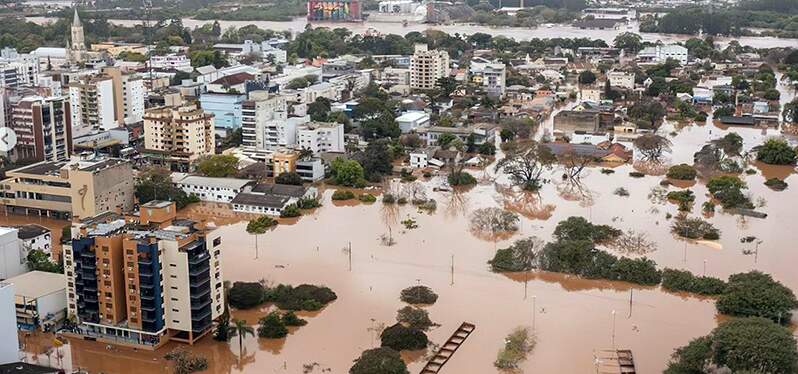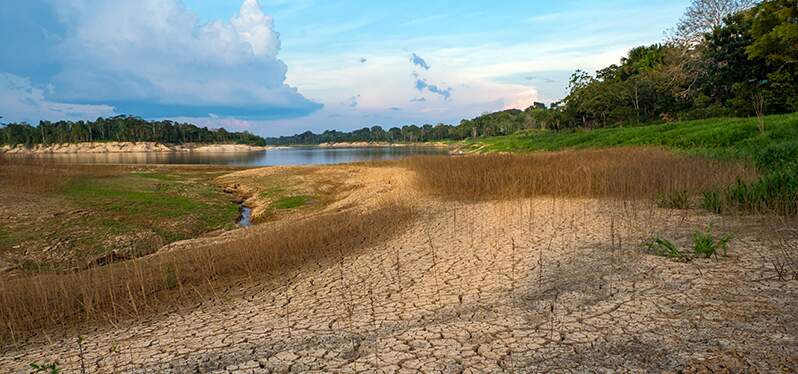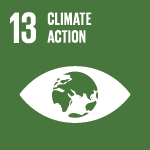Posted in: 11/07/2023
Forest and Climate Day aims to reinforce the importance of the Amazon Forest and actions to reduce greenhouse gas emissions from its deforestation, as measures to contain climate change.
The date, celebrated on November 7th , was created in 2007 by the promulgation of the State Policy on Climate Change, Environmental Conservation and Sustainable Development of Amazonas .
In 2023, with the increase in local temperatures and the unprecedented drought that led to the record lowering of the Madeira, Negro and Solimões Rivers , in the Amazon region, celebrating this date may seem contradictory given the potential effects of climate events worsened by climate change , which take place not only in different Brazilian states, but also around the world.
When we think about extreme events, such as the drought in the North Region , or the large volume of rain that hit the South Region of the country , we must be careful in immediately associating them with climate change, as this statement requires scientific validation that, to date, it has not been published for these two cases.

However, it is a consensus presented by the Intergovernmental Panel on Climate Change ( IPCC, in English ), in its 2023 Synthesis Report , that changes in the climate system, such as extreme events, will be greater and more frequent with the increase in Earth’s temperature caused by the effect stove.
In an interview with the BBC , CEMADEN researcher and meteorologist, Giovanni Dolif, states that the great drought witnessed in the north of the country cannot yet be related to climate change , but it is an event compatible with those that occur with the increase in Earth’s temperature.
Still according to Dolif, one of the preponderant factors for the design of the current scenario experienced in the North and South Regions of the country is the concomitant occurrence of two atmospheric-oceanic phenomena that occur sporadically: the warming of the waters of the North Atlantic Ocean , which leads to drought in Northern region of the country, known as the Atlantic Dipole , and the one known as El Niño .
According to the National Institute for Space Research ( INPE ), El Niño occurs when the Equatorial Pacific Ocean warms due to the weakening of the trade winds in the equatorial region, which are unable to dissipate the hot surface water. This effect could cause an increase in rainfall intensity in the south of the country and an increase in temperature and drought in the North and Northeast regions.
The conjunction of naturally occurring climate phenomena, El Niño and the North Atlantic Dipole, added to the average increase in global temperature – caused by the greenhouse effect – created an unprecedented scenario for the Amazon region .
The current situation faced in the North of the country may be worsened by the loss of forested area , caused mainly by deforestation and fires .
There are two relationships between the events: the first is that the change in land use , that is, the transformation of the forest (which is a carbon reserve) into pasture or monocultures through deforestation and land grabbing, causes the area emits greenhouse gases (GHG) , instead of absorbing them. As greater GHG emissions contribute to the warming of the region and the planet, this can worsen crises like the current ones.
The second relationship is that forest removal results in an imbalance in the regional climate . Plant transpiration causes a large amount of water to be released into the air, increasing humidity in the region and forming rain clouds. Therefore, the less forest there is, the lower its capacity to contribute to the local rainfall regime.

Through an approximate calculation, using INPE’s TerraBrasilis database as a reference , it is possible to verify that since 2007 – the year in which Forest and Climate Day was created – until the end of 2022, 13 .5 million hectares of forest present in the territory classified as Legal Amazon . This data, in addition to showing that the concern with keeping the forest standing is legitimate , tells us that just celebrating one day is not enough to guarantee that people, animals and plants do not suffer from the impacts of climate change and its extreme events.
Action is urgent , 2023 is a year full of discussions and agreements related to the Amazon territory. Civil society needs to actively participate in decision-making meetings , public consultations, denounce irregularities and pressure elected representatives so that commitments are taken seriously.
Text prepared by Jordi Gimbernau Gimenez,
Sustainability Analyst at Synergia Socioambiental

Sign up and receive our news.